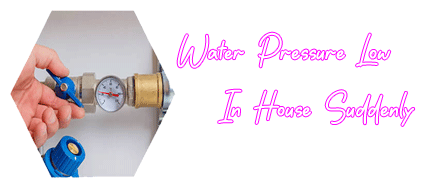Water is a priceless gift from nature, covering 71% of Earth’s surface, with the remaining 29% consisting of land. Despite its abundance, clean water is a scarce resource, and water pollution has become an uncontrollable issue due to human exploitation. This article explores critical facts about water pollution, its causes, major problems, and its devastating impact on life and the environment. Additionally, we’ll address the issue of sudden low water pressure in houses, highlighting this commonly faced household challenge.

What is Water Pollution?
Water pollution refers to the contamination of water sources such as rivers, lakes, oceans, and groundwater by harmful substances. These pollutants come from industrial, agricultural, and domestic activities. Contaminated water affects all living organisms, disrupting ecosystems, and leading to severe health and environmental crises.
Key Facts About Water Pollution
Scarcity of Clean Water:
Despite water covering 70% of Earth’s surface, only 2.5% is freshwater.
Impact on Human Health:
Polluted water is a major cause of diseases such as cholera, typhoid, and dysentery. Children are particularly vulnerable, with millions dying annually due to waterborne illnesses.
Industrial and Domestic Waste:
Domestic sewage contributes significantly to water pollution, especially in densely populated regions.
Global Crisis:
In China, 20% of groundwater is contaminated with carcinogenic chemicals.
India’s Ganges River is one of the most polluted, with waste, sewage, and animal remains regularly dumped into it.

Marine Life Impact:
Plastic waste and pollutants dumped into oceans harm over 100,000 marine mammals and countless sea birds annually.
Major Problems Caused by Polluted Water
Health Crises:
Polluted water is responsible for outbreaks of cholera, typhoid, and other deadly diseases, affecting millions of people globally.
Environmental Damage:
Toxic chemicals disrupt biological communities, killing aquatic plants and animals and causing imbalances in ecosystems.
Economic Losses:
The destruction of fisheries, reduced agricultural productivity, and healthcare costs burden economies heavily.
Tsunamis and Their Impact on Water Pollution
Natural disasters like tsunamis contribute significantly to water pollution. Tsunamis bring massive waves that disrupt coastal ecosystems, contaminate freshwater sources with saltwater, and spread debris, including hazardous waste. For example, the tsunami in Japan led to the dumping of radioactive waste into oceans, causing long-term environmental damage.
Sudden Low Water Pressure in the House: Causes and Solutions
Low water pressure can disrupt daily household activities.
Leaking Pipes:
Leaks in the plumbing system reduce water flow. Inspect and repair any leaks promptly.
Clogged Pipes:
Mineral deposits or debris can obstruct pipes, causing low pressure. Flushing the system or professional cleaning may help.
Municipal Supply Issues:
Local water supply interruptions due to maintenance work can lead to low pressure.
Pressure Regulator Issues:
Replacing it might resolve the problem.
Shared Water Supply:
If multiple homes share a single water line, high usage during peak hours can result in lower pressure. Consider installing a booster pump to improve flow.
Importance of Saving Water
Given the critical shortage of clean water, it is imperative to conserve and protect this resource. Steps such as fixing household leaks, reducing waste, and supporting clean water initiatives can make a significant difference. Governments and communities must work together to combat pollution and ensure clean water for future generations.
Water pollution is a pressing global issue that threatens human health, ecosystems, and economies. Understanding the facts and taking proactive steps, including addressing household issues like sudden low water pressure, can contribute to a healthier and more sustainable environment. Let’s commit to reducing pollution and conserving water to secure this invaluable resource for generations to come.




